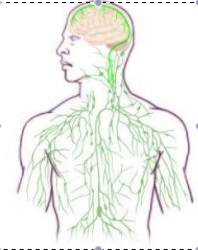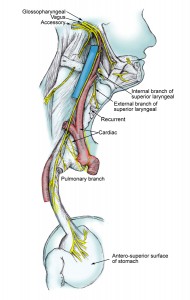Here is the link for the presentation I made to the Santa Cruz Trauma Consortium May 14, 2015 “Polyvagal theory for all of us: how it informs trauma resolution, supports adaptation / resiliency and compassion”. (2 slides have been added: – #s 63 and 64) SCTC Polyvagal 3-pg Here is the link for the updated reference list: SCTC polyvagal talk reference list .
(COMING SOON – I ran into technical difficulties with 2 slides of photographs that use too many MB.) Here is the link for the presentation I gave for Transition Dummerston (VT): Building Greater Community Resilience around Trauma: how we, as a community and as individuals, can offer skillful and compassionate support for those who are experiencing the aftereffects of traumatic events. This talk provides a basic operating manual for the nervous system based on Dr. Stephen Porges’ polyvagal theory; with maps for recovery, user-friendly explanations and simple practices/exercises that individuals, organizations and communities are now using to experience greater resiliency after traumatic events. https://lelaccarney.com/wp-content/uploads/2015/10/Dummerston-polyvagal-talk-1-50.pdf and Dummerston polyvagal talk 51-93
Here is a link to Dacher Keltner’s “Secrets of the Vagus Nerve”. Keltner is UC Berkeley psychology professor and faculty director of the Greater Good Science Center. http://greatergood.berkeley.edu/gg_live/science_meaningful_life_videos/speaker/dacher_keltner/secrets_of_the_vagus_nerve/ Keltner shares his research on the vagus nerve, a key nexus of mind and body and a biological building block of human compassion.
Current Western biomedical research that does not appear to recognize the differences between the dorsal and ventral vagus nerve: Hacking The Nervous System (a neuroscientist treats inflammation through electrical stimulation to the vagus nerve): http://mosaicscience.com/story/hacking-nervous-system “the brain might be using the nervous system – specifically the vagus nerve – to tell the spleen to switch off inflammation everywhere. . . . It was an extraordinary idea – if Tracey (Kevin Tracey, a neurosurgeon based in New York) was right, inflammation in body tissues was being directly regulated by the brain. Communication between the immune system’s specialist cells in our organs and bloodstream and the electrical connections of the nervous system had been considered impossible. Now Tracey was apparently discovering that the two systems were intricately linked. . . . Because the vagus nerve, like all nerves, communicates information through electrical signals, it meant that we should be able to replicate the experiment by putting a nerve stimulator on the vagus nerve in the brainstem to block inflammation in the spleen,” he explains. “That’s what we did and that was the breakthrough experiment. . . Tak suspects that patients will continue to need vagal nerve stimulation for life. But unlike the drugs, which work by preventing production of immune cells and proteins such as TNF, vagal nerve stimulation seems to restore the body’s natural balance. It reduces the over-production of TNF that causes chronic inflammation but does not affect healthy immune function, so the body can respond normally to infection.”
Through somatic-based therapies like Somatic Experiencing, acupuncture and therapeutic yoga/qi gong/massage, practitioners can help people learn to self-regulate some of these same vagus nerve-based inflammatory syndromes, perhaps without – or to eventually replace the electrical stiumlation used in the article above.
“The implications of being able to simply and cheaply improve vagal tone, and so relieve major public health burdens such as cardiovascular conditions and diabetes, are enormous. It has the potential to completely change how we view disease. If visiting your GP involved a check on your vagal tone as easily as we test blood pressure, for example, you could be prescribed therapies to improve it. . . What seems more likely in the shorter term is that (vagal tone) devices will be implanted for many diseases that today are treated by drugs. . . However the technology develops, our understanding of how the body manages disease has changed for ever. “It’s become increasingly clear that we can’t see organ systems in isolation, like we did in the past,” says Paul-Peter Tak. “We just looked at the immune system and therefore we have medicines that target the immune system. But it’s very clear that the human is one entity: mind and body are one. It sounds logical but it’s not how we looked at it before. We didn’t have the science to agree with what may seem intuitive. Now we have new data and new insights.”
And from another angle, that of newly discovered lymphatic vessels in the brain: Missing link found between brain, immune system; major disease implications. http://www.sciencedaily.com/releases/2015/06/150601122445.htm?utm_source=feedburner&utm_medium=email&utm_campaign=Feed%3A+sciencedaily%2Fmind_brain+%28Mind+%26+Brain+News+–+ScienceDaily%29
Left illustration: newly discovered brain lymphatic pathway. Right illustration: ventral vagus nerve pathway


